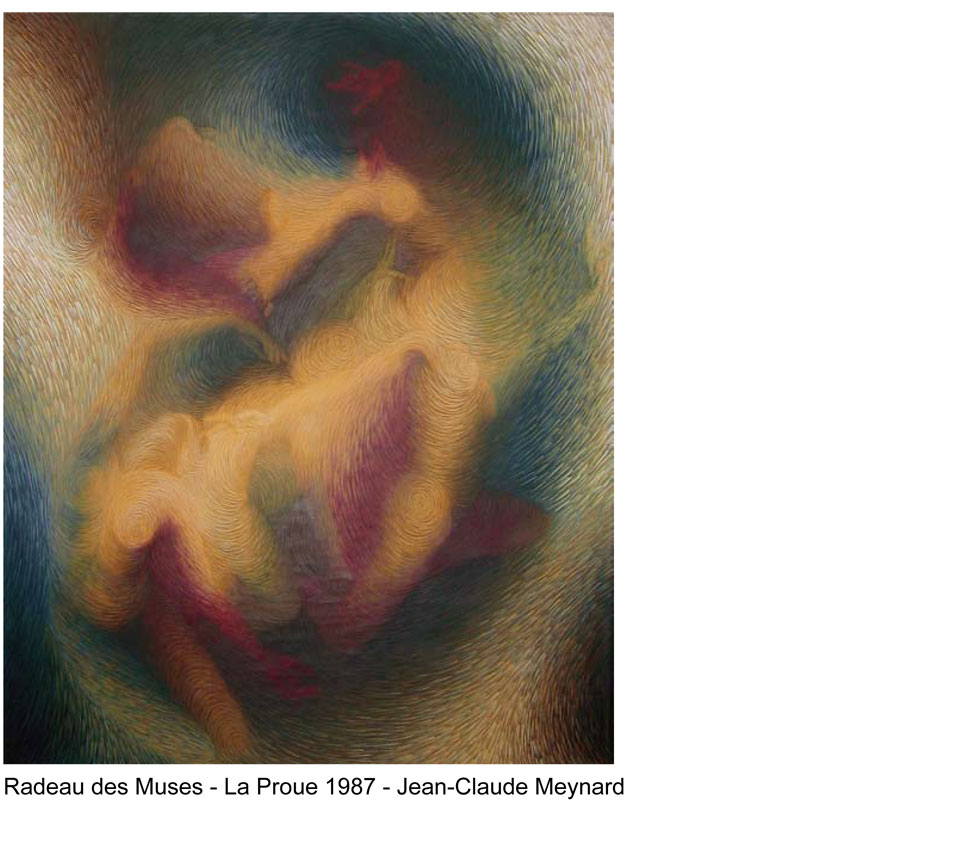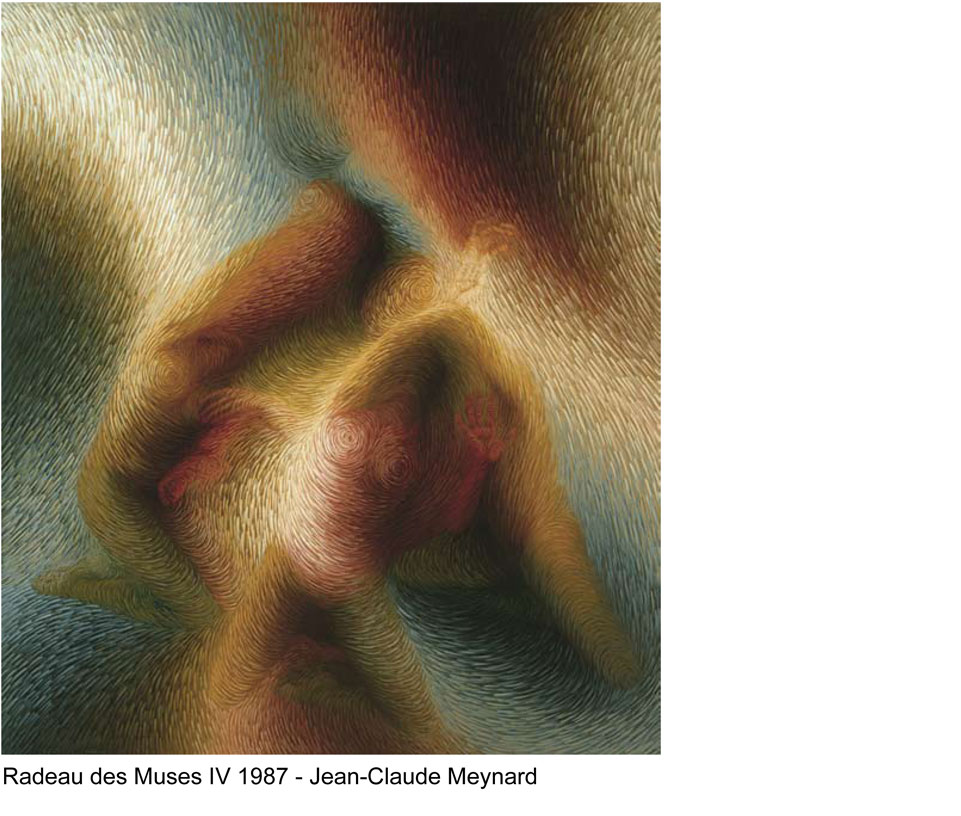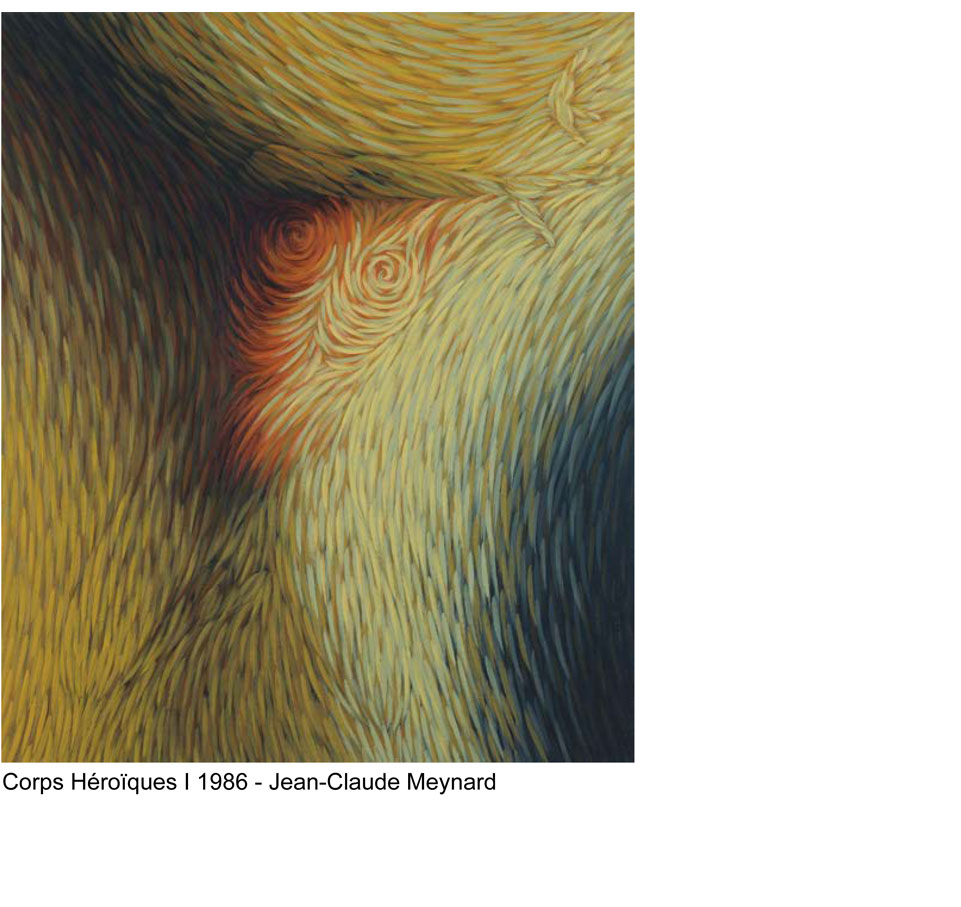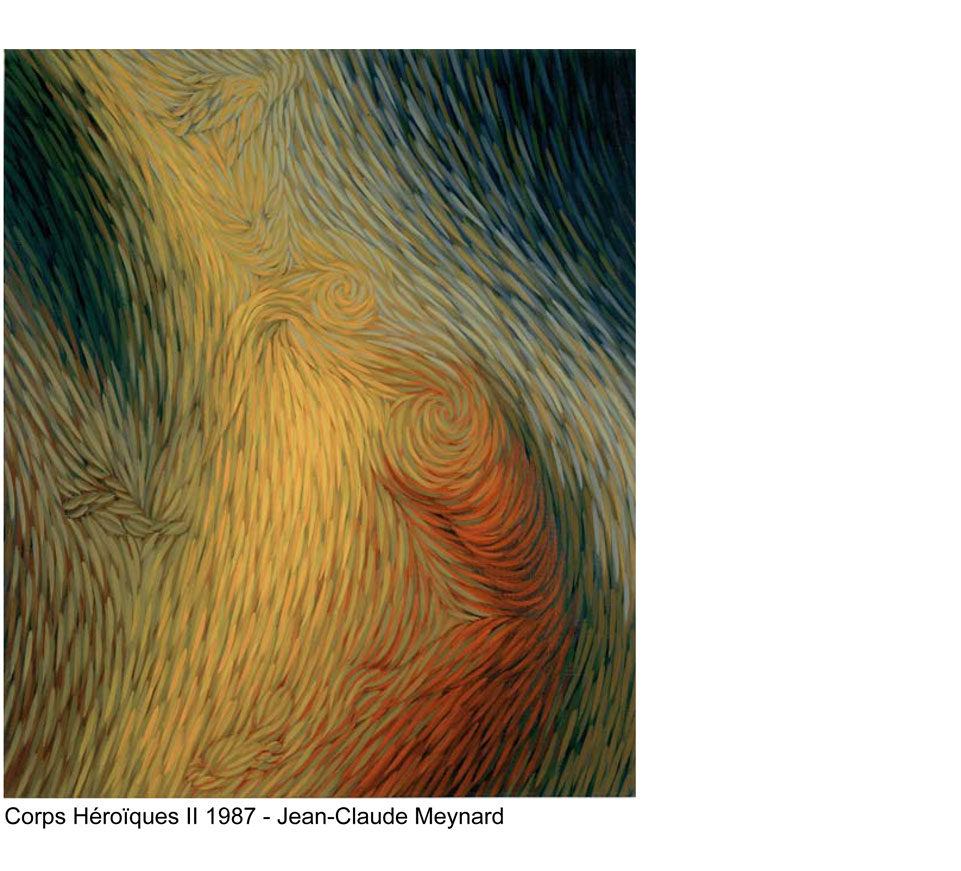| |
JEAN-CLAUDE MEYNARD, LE RADEAU DES MUSES.
Baudelaire était bien dans l’oeil du cyclone... A l’exacte intersection de ce qui doit mourir et de
ce qui doit naître, entre la passion métaphysique et le silence de la peinture, c’est-à-dire entre
Delacroix et Manet, il se retrouve écartelé par ce choix, paniqué par l’irrémédiable. «Vous êtes le premier dans la décrépitude de votre art», lance-t-il à Manet. Et cette «décrépitude» réside dans la disparition progressive de l’image et du sujet, dans l’éloquence étouffée
par le déferlement des touches. Mais il s’agit surtout de l’éclatement d’une image héroïque
de l’individu, noyé dans les rues par la foule urbaine et écrasé sur la toile par la
bidimensionnalité... Comment le modernisme baudelairien a-t-il pu se cabrer ainsi devant
l’apocalypse du sujet? Parce qu’en France, gouffre pour gouffre, on a toujours préféré y
plonger à rebours. Parce qu’il existe une passion française pour le crépusculaire, pour
le faisandé magnifique, pour la danse macabre déguisée en flamboyant feu d’artifice...
Et si nous savons désormais que les héros meurent quand les systèmes s’écroulent, le choix
baudelairien reste le nôtre: nous avons d’ailleurs les Delacroix que nous méritons et des
Manet en pagaille!
|
| |
Définissons ce terme de «héros» pictural comme un système qui lierait sujet et mythe, sujet
et valeur: Delacroix le trouvait encore dans l’enchevêtrement des batailles, ou Boccioni
dans la machine à pleine vitesse, mais aujourd’hui, il n’est pas d’autre possibilité que de
le chercher en dehors de nous, dans une exploration méthodique du champ interactif qui
existe entre les figures, non pas dans la présentation mais dans son négatif. Le «héros» de
la peinture a définitivement déserté l’humain. Comme l’écrivait Henry Miller, «maintenant le
monstre est invisible. Il y en a des billions dans un grain de poussière». Et cette tentative,
désespérée, de reconstituer le corps héroïque de la peinture est centrale chez Jean-Claude
Meynard, qui méthodiquement, froidement même, travaille à recréer des conditions propices
à sa venue; mais il ne reviendra plus. Le charme est rompu, et si Meynard fascine, c’est
parce qu’il a perdu d’avance la guerre des styles, et que son oeuvre est le brasier glacial où
crépite l’éloquence de la peinture, tisonné par un geste beaucoup trop lucide pour s’oublier
dans la malédiction. Peut-on insuffler la vie à une motte de terre? Peut-on former un être
humain à partir d’un cadavre? Quelques-uns essayèrent... C’est en tous cas la quête de
quelques peintres dont le seul tort aura été de ne pas nous accompagner, tête baissée, dans
la «décrépitude».
Nicolas BOURRIAUD, Mai 1988.
|









